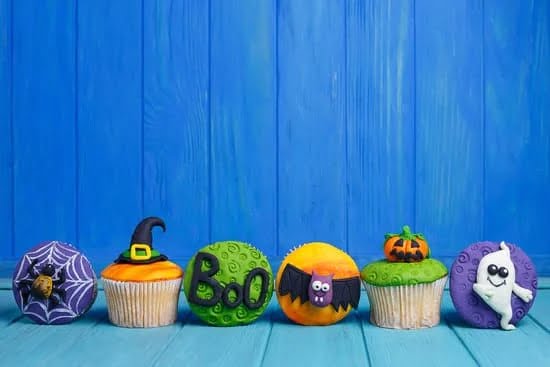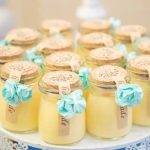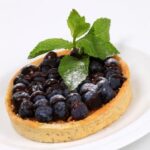When it comes to cake decorating, there are endless possibilities to make your creations stand out. One trend that has gained popularity in recent years is the use of edible leaves as a design element. Not only do these leaves add a touch of natural beauty to cakes, but they also offer versatility in terms of theme and style.
The allure of using edible leaves lies in their inherent beauty and organic appeal. Whether it’s the delicate mint leaves, the vibrant parsley leaves, or the aromatic basil leaves, each type adds its own unique charm to a cake design. The use of edible leaves can create stunning effects that mimic nature or enhance floral arrangements.
One of the key advantages of incorporating edible leaves into cake decorating is their versatility. From rustic farm-inspired themes to elegant botanical designs, there is a wide range of leaf options to choose from. Popular choices include fresh mint, parsley, and basil, which are easily accessible at most grocery stores. However, for those looking for more visually appealing options, rosemary, lemon balm, or Nasturtium leaves can provide a touch of sophistication and elegance.
No matter which type of edible leaf you choose, proper preparation is essential before using them in your cake designs. Cleaning and handling techniques vary depending on the types of leaves used. Selecting organic and pesticide-free leaves is crucial for ensuring food safety and preventing any potential health risks.
As you embark on your journey into the world of cake decorating with edible leaves, different techniques can be employed to attach them to your creations effectively. Making leaf-shaped templates allows for precise control over leaf shapes and sizes while royal icing provides a secure attachment method. Alternatively, pressing the fresh leaves directly onto frosting can create natural patterns and textures.
In the next sections of this article series, we will delve deeper into various types of edible leaves suitable for cake decorating along with step-by-step instructions on preparing and using them. Additionally, we will explore design ideas, flavor pairings, safety considerations, and handy tips to help you create beautiful and delicious edible leaf-adorned cakes that are sure to impress. So let your imagination run wild with the possibilities of edible leaves in cake decorating.
Types of Edible Leaves for Cake Decorating
When it comes to cake decorating, the options are endless. One trend that has gained popularity in recent years is using edible leaves as a design element. Edible leaves not only add a touch of natural beauty to cakes but also offer versatility for various themes and styles. There are several types of edible leaves that can be used in cake decorating, each bringing its own unique charm.
One popular choice for edible leaves is mint. Mint leaves provide a refreshing taste and aroma, making them perfect for pairing with fruity or chocolatey flavors. They also come in different varieties such as spearmint and peppermint, offering options for different color shades and shapes. Another readily accessible option is parsley, which adds a vibrant green hue to any cake design. Its delicate fronds create an elegant and airy look.
For those looking to add a more distinctive touch to their cakes, there are unique and visually appealing options available as well. Rosemary leaves, with their needle-like shape and aromatic fragrance, provide an earthy element to cake designs.
Lemon balm leaves bring a hint of citrus flavor and bright green color, enhancing both the visual appeal and taste of the cake. Nasturtium leaves offer a bold pop of color with their vibrant orange and yellow hues, making them ideal for creating eye-catching designs.
When using these edible leaves in cake decorating, it’s important to properly clean and prepare them before applying them to your creations. Start by gently washing the leaves under cool water to remove any dirt or debris. Pat them dry with paper towels or allow them to air dry completely before use. It’s always preferable to use organic and pesticide-free leaves for food safety reasons.
To achieve the freshest and most visually appealing results when using edible leaves on cakes, it’s essential to select the highest quality leaves available. Look for leaves that are vibrant in color without any wilting or browning. Avoid leaves with any signs of damage or discoloration, as they won’t lend themselves well to cake decoration.
Overall, edible leaves can elevate the look and taste of your cake designs. From classic options like mint and parsley to more unique choices like rosemary and Nasturtium leaves, each type brings its own charm to the table. By exploring these options and experimenting with different leaf combinations, you can create stunning cakes that are not only visually appealing but also tantalizing to the taste buds.
Preparing Edible Leaves for Cake Decorating
When it comes to incorporating edible leaves into cake decorating, proper preparation is key to ensure both safety and visual appeal. Preparing edible leaves for cake decorating involves a few simple steps that will help you achieve the best results.
Cleaning and Washing
Before using edible leaves on cakes, it is crucial to clean them thoroughly to remove any dirt, debris, or potential contaminants. Start by removing any damaged or discolored leaves. Then gently rinse the remaining leaves under cool running water to remove any visible impurities. For delicate herbs like basil or mint, use a colander or salad spinner to prevent bruising.
Organic and Pesticide-Free
To ensure food safety, it is highly recommended to choose organic and pesticide-free leaves for cake decorating purposes. This is particularly important if the leaves are going to be in direct contact with the cake or consumed along with it. Pesticides can be harmful when ingested, so taking this precaution will help protect both yourself and those enjoying your creations.
Selecting Fresh Leaves
Selecting the freshest leaves possible is essential for creating visually appealing cake designs. Look for leaves that are vibrant in color and free from wilting or browning. Avoid using overly mature leaves as they may have a bitter taste or lack the desired freshness. Additionally, consider seasonal availability and try to incorporate fresh herbs and edible foliage when they are at their peak.
By following these steps, you can ensure that your edible leaves are clean, safe, and ready to enhance your cake designs. Taking the time to properly prepare your edible leaves will result in stunning decorations that not only look beautiful but also add delightful flavors and aromas to your cakes.
Techniques for Using Edible Leaves in Cake Decorating
Using edible leaves as a decoration on cakes offers endless possibilities for creative and visually appealing designs. In this section, we will explore different techniques to attach leaves to cakes, create beautiful arrangements, and provide inspiration for your own edible leaf cake creations.
- Leaf-Shaped Templates: One technique for using edible leaves in cake decorating is to create leaf-shaped templates out of parchment or wax paper. Simply trace the desired leaf shape onto the paper and cut it out. Place the template on the cake, and carefully sprinkle colored sugar or food-safe glitter over it to achieve a leaf-like appearance.
- Royal Icing Adhesion: Another method is to use royal icing to attach small edible leaves directly onto the cake. Mix royal icing according to package instructions, then pipe a small dot of it onto the backside of an edible leaf. Press the leaf gently onto the frosting, hold it in place for a few seconds until it adheres, and repeat with additional leaves.
- Pressing Leaves Onto Frosting: For a more natural look, you can also press fresh edible leaves directly onto frosted cakes. Ensure that the frosting has set slightly before placing the leaves on top to prevent them from sinking into the frosting. Gently press the leaves onto the surface of the cake at various angles, creating an organic and textured effect.
By experimenting with these techniques, you can create visually pleasing arrangements and patterns with edible leaves that complement your overall cake design.
To further inspire your creativity, here are examples of cakes that incorporate different techniques for using edible leaves in their decorations:
- A rustic-themed wedding cake adorned with pressed green basil leaves arranged in a cascading pattern.
- A whimsical birthday cake featuring colorful leaf-shaped templates made from tropical banana leaves dusted with gold luster dust.
- A sophisticated floral arrangement cake decorated with delicate mint sprigs attached using royal icing, providing an elegant touch to the design.
Remember, the key is to let your imagination run wild and have fun with the process. Experiment with different techniques and combinations of edible leaves to create a cake that is not only visually stunning but also uniquely yours.
Design Ideas and Inspirations with Edible Leaves
When it comes to cake decorating, edible leaves offer an abundance of design ideas and inspirations. Whether you’re looking to create a nature-themed cake, a floral arrangement, or a seasonal design, incorporating edible leaves can add a touch of elegance and natural beauty to your creations.
- Nature-Themed Cakes: For those who love the outdoors and appreciate the beauty of nature, designing a cake inspired by the natural world is a fantastic idea. Consider using a variety of edible leaves to create realistic foliage patterns on your cake.
This can be done by arranging different types of leaves in various shapes and sizes to mimic natural landscapes. You can also use edible leaves as accents or borders around other elements such as flowers or animal figurines. - Floral Arrangements: Edible leaves are perfect for creating stunning floral arrangements on cakes. Choose leaves that have interesting textures and colors like lemon balm or Nasturtium leaves to achieve visually striking designs. Combine these leaves with edible flowers for a truly captivating centerpiece that will impress your guests.
- Seasonal Designs: Embrace the changing seasons by incorporating edible leaves into your cake designs. During springtime, fresh mint or basil leaves can symbolize new beginnings and growth while adding a refreshing taste to your cake. In autumn, consider using vibrant red-toned rosemary leaves for a warm and cozy feel. By using edible leaves that reflect each season’s distinct characteristics, you can create cakes that capture the essence of nature throughout the year.
To ensure that your leaf decorations blend seamlessly with your overall cake design, consider matching them with other elements such as flowers and fruits. For example, pair mint or basil leaves with citrus-flavored cakes topped with slices of lemon or lime for a refreshing combination. Alternatively, use lavender sprigs alongside rosemary leaves to enhance the herbal profile of chocolate or vanilla cakes.
With endless possibilities for creativity and design, using edible leaves in cake decoration opens up a new world of inspiration. Don’t be afraid to experiment and let your imagination run wild. From simple leaf arrangements to intricate patterns, the use of edible leaves will undoubtedly take your cake decorating skills to the next level.
So go ahead and gather your favorite types of edible leaves and get ready to transform your cakes into captivating works of art. Share your edible leaf cake creations on social media platforms using a customized hashtag, and inspire others to embrace this trend of using nature’s beauty as the perfect finishing touch in cake decorating.
Flavor Combinations and Pairings with Edible Leaves
When it comes to cake decorating, the addition of edible leaves not only adds visual appeal but can also enhance the flavor profile of your creations. By incorporating the right flavor combinations and pairings with edible leaves, you can create a harmonious balance that tantalizes the taste buds. Here are some suggestions for pairing edible leaves with different cake flavors:
- Mint: Mint leaves have a refreshing and cool taste that pairs well with various cake flavors. Try adding fresh mint leaves to chocolate cakes for a burst of freshness, or combine them with lemon-flavored cakes for a delightful citrusy twist.
- Basil: Although typically associated with savory dishes, basil leaves can lend their herbaceous aroma to sweet treats as well. Pair basil leaves with strawberry cakes for a unique and aromatic combination, or infuse their flavor into vanilla cakes for an unexpected twist.
- Rosemary: With its distinct pine-like fragrance, rosemary is an excellent choice for adding depth and complexity to cakes. Consider pairing rosemary leaves with citrus-based cakes such as orange or lemon to create a tangy yet earthy flavor profile.
- Lemon balm: Known for its bright lemony scent, lemon balm is a versatile herb that can elevate various cake flavors. Combine lemon balm leaves with blueberry cakes for a zesty burst of citrus, or infuse their flavor into vanilla or coconut-based cakes to add a refreshing kick.
- Lavender: This fragrant flower is often associated with relaxation and tranquility. When using lavender in cake decorating, opt for light and delicate flavors such as vanilla or white chocolate to allow the floral notes of the lavender to shine through without overwhelming the palate.
These are just some examples of flavor combinations and pairings with edible leaves in cake decorating. Feel free to experiment and explore your own unique combinations based on personal preferences and creativity. Remember to consider the overall flavor profile of the cake and aim for a harmonious balance between the sweetness of the cake and the flavors imparted by the leaves.
By consciously selecting edible leaves that complement your chosen cake flavor, you can create an unforgettable culinary experience that not only delights the eyes but also satisfies the taste buds. Don’t be afraid to get creative and try new combinations – your edible leaf-adorned cakes are sure to be a hit at any gathering or celebration.
Safety Considerations and Tips for Using Edible Leaves in Cake Decorating
When using edible leaves in cake decorating, it is important to consider safety precautions to ensure the health and well-being of those consuming the cake. This section provides valuable tips and guidelines to follow when working with edible leaves.
Firstly, it is crucial to be aware of any allergies or dietary restrictions that individuals may have. Certain leaves, such as mint or basil, can potentially trigger allergic reactions in some people. It is essential to inform customers or guests about the presence of edible leaves on the cake and ask them if they have any known allergies or sensitivities. In cases where there are specific restrictions, alternative decorations can be used instead.
Another important consideration is the source and quality of the leaves used for decorating. When choosing edible leaves, opt for organic and pesticide-free options to ensure that no harmful chemicals are transferred onto the cake. It is recommended to purchase from trusted suppliers who prioritize food safety.
Proper storage and handling techniques are also crucial for maintaining leaf freshness and preventing any potential health risks. After cleaning the leaves according to the instructions provided in the previous section, store them in a cool and dry place until you are ready to garnish the cake. Avoid exposing them to excessive moisture or heat as this can cause wilting or decay.
| Safety Considerations | Tips |
|---|---|
| Be aware of allergies or dietary restrictions | Inform customers/guests about the presence of edible leaves on the cake and ask them if they have any known allergies or sensitivities |
| Select organic and pesticide-free leaves | Purchase from trusted suppliers who prioritize food safety |
| Proper storage and handling techniques | Store cleaned leaves in a cool and dry place until ready to garnish the cake, avoiding excessive moisture or heat |
Conclusion
In conclusion, edible leaves are the perfect finishing touch for cake decorating. The trend of using these natural elements has gained popularity due to their beauty and versatility. Edible leaves offer a unique and visually stunning design element that can enhance any cake theme or style.
From popular options like mint, parsley, and basil to more unique choices such as rosemary, lemon balm, and Nasturtium leaves, there are countless possibilities to explore. Not only do these leaves add visual appeal, but they also bring additional flavors and aromas to cakes. By incorporating edible leaves into your cake designs, you can create a truly memorable culinary experience.
When preparing edible leaves for cake decorating, it is crucial to ensure they are cleaned properly and sourced from organic and pesticide-free plants. This step is essential for food safety reasons and guarantees the freshest and most vibrant leaves for your creations.
Additionally, various techniques can be employed to attach the leaves to cakes, whether it be using leaf-shaped templates or pressing the leaves directly onto frosting. With some creativity and practice, you can master the art of creating visually pleasing arrangements and patterns with edible leaves.
To truly elevate your cake designs using edible leaves, take inspiration from a wide array of design ideas. These ideas encompass nature-themed cakes, floral arrangements, seasonal designs, and much more. Incorporating different leaf colors, shapes, and sizes will make your creations truly stand out. Don’t be afraid to pair the leaf decorations with other elements such as flowers and fruits to create a harmonious composition that wows both the eyes and taste buds.
Frequently Asked Questions
What leaves can I use to decorate a cake?
When it comes to decorating a cake with leaves, there are several options you can consider. One popular choice is using fresh herbs such as mint, basil, or rosemary leaves. These herbs not only add a beautiful touch of greenery but also bring a fresh aroma and subtle flavor to your cake.
Another idea is using edible flowers with leafy parts like pansies, violets, or nasturtiums. These delicate blooms not only provide colorful accents to your cake but their leaves can complement the overall design. Lastly, if you prefer a more artistic approach, you can use fondant or gum paste to create intricate leaf shapes that can be molded and painted to match the theme or style of your cake.
How do you make edible leaves for a cake?
Making edible leaves for a cake requires some creativity and attention to detail. One way to create them is by using molds specifically designed for creating edible decorations. You can find various leaf-shaped molds made from silicone or other food-safe materials at baking supply stores or online retailers.
Simply press a small amount of fondant or gum paste into the mold, remove any excess material, and carefully release the formed leaf shape onto a clean surface. If you want realistic-looking leaves, you might consider using veiners which help imprint vein patterns onto the leaves for added authenticity before placing them on your cake.
How do you make edible leaf decorations?
To make edible leaf decorations for your cakes, there are a few different techniques you can employ depending on the desired effect. Fondant provides an excellent medium for crafting detailed and lifelike leaves. Roll out some fondant thinly on a clean surface, lightly dusted with powdered sugar or cornstarch to prevent sticking.
Then use leaf-shaped cutters to cut out individual leaves from the fondant sheet and gently lift them using a spatula or your fingers onto parchment paper so they maintain their shape while drying out slightly before being placed on the cake. If you’re looking for more dimension, consider using gum paste, which can be molded and shaped to resemble different varieties of leaves. Once the gum paste dries, you can further enhance their appearance by painting them with edible food coloring or dusting them with shimmering powders to make them truly eye-catching.

Welcome to our cake decorating blog! My name is Destiny Flores, and I am the proud owner of a cake decorating business named Cake Karma. Our mission is to provide delicious, beautiful cakes for all occasions. We specialize in creating custom cakes that are tailored specifically to each customer’s individual needs and tastes.





